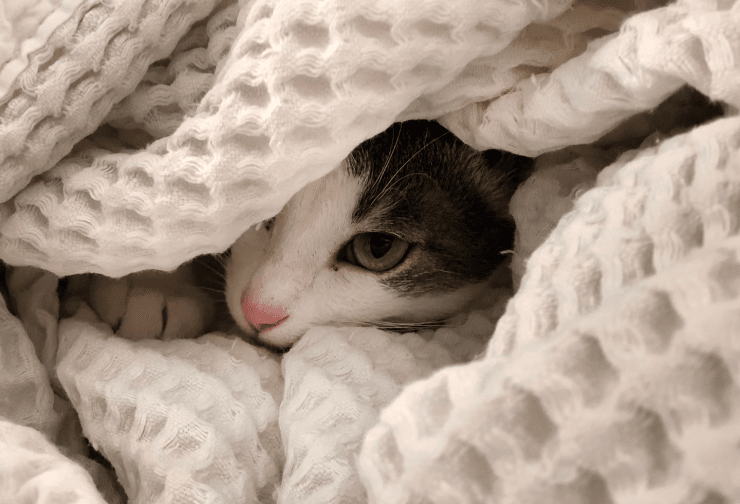Table of Contents

What are ticks?
How to prepare for tick season
How to prevent ticks on pets

Table of Contents

What are ticks?
How to prepare for tick season
How to prevent ticks on pets
As the seasons change and spring approaches, it's time to gear up for the return of tick season. Ticks can be a nuisance for both pets and humans alike, but with the right preparation and preventive measures, you can keep your furry friends safe and tick-free. Scroll to find out more!
Ticks are small arachnids that feed on the blood of mammals, birds, and sometimes reptiles and amphibians. They're commonly found in wooded areas, tall grass, and shrubs, where they wait patiently for a host (usually your pets!) to pass by so they can latch on and begin feeding.
What is Tick Season?
Tick season typically coincides with warmer weather, particularly in spring and summer months. As temperatures rise, ticks become more active and abundant, making outdoor activities more risky for both pets and humans. In the UK tick’s really get going in March (a bit earlier than fleas kick into full force!) and they carry on being a prominent nuisance until around October - but this doesn’t mean they disappear in winter sadly.
Are Ticks Bad in Spring?
Yes, ticks can indeed be bad in spring, especially as temperatures begin to warm up and outdoor activities become more prevalent. Spring is a prime time for ticks to emerge from their winter slumber and seek out your pets for feeding. Therefore, it's crucial to be extra vigilant during this time and take proactive measures to protect your pets from tick bites.
To prepare for tick season and minimise the risk of tick bites for your pets, consider the following tips:
Regularly check your pet: Take the time to thoroughly inspect your pet's coat for any signs of ticks, especially after spending time outdoors. Pay close attention to areas such as the ears, neck, and between the toes, where ticks are more likely to hide.
Invest in preventive products: Using a preventative treatment like Itch Flea Treatment for dogs and Itch Flea Treatment for cats (kills ticks and lice too!) is the best way to keep on top of these pesky parasites!
Maintain your garden: Keep your lawn mowed short and remove any tall grass, brush, or leaf litter from your garden, as these are prime habitats for ticks. Consider creating a tick-safe zone around your home by using landscaping techniques to minimise tick habitat.
Limit outdoor activities: While it's essential for pets to get exercise and fresh air, try to avoid areas known to be heavily infested with ticks, such as wooded areas and tall grass. Stick to well-maintained paths and trails when walking your pet, and consider using tick repellent clothing for yourself if venturing into tick-prone areas.
In addition to preparing for tick season, it's crucial to take proactive steps to prevent ticks from latching onto your pets. Here are some preventive measures you can implement:
Use tick prevention products: Using a preventative treatment like Itch Flea Treatment for dogs and Itch Flea Treatment for cats (kills ticks and lice too!) is the best way to keep those ticks at bay!
Perform regular tick checks: Routinely check your pet for ticks, especially after outdoor activities. If you find any ticks, promptly remove them ensuring you extract the entire tick, including the head - here’s our guide on how to safely remove a tick
Keep indoor and outdoor areas clean: Regularly hoover your home and wash your pet's bedding to remove any ticks or tick eggs that may have been brought indoors.
As spring approaches and tick season is right around the corner. It's essential to prepare accordingly to protect your pets from these blood-sucking parasites. By taking proactive measures and implementing preventive strategies, you can minimise the risk of tick bites and keep your furry companions safe and healthy. Remember, prevention is key when it comes to ticks, so be vigilant and proactive in safeguarding your pets from these pesky parasites. Here's to a tick-free spring season for you and your pet!
Fleas, ticks and lice can be a nightmare, but with the right approach, you can take control and rid your pets and home of these bothersome pests. Remember that parasites can be persistent, so patience and regular treatment will be your best friends! By addressing both your pet and their environment, you can ensure a flea-free and comfortable living space for both your furry companion and your family.
SHOP NOW


The closest thing you’ll find to a real life vampire are ticks, those pesky parasites that can attach themselves to your beloved pets and cause a host of health issues. These blood-sucking arachnids are not only uncomfortable for your furry friends but can also transmit diseases. Recognising the appearance of ticks on your pets is essential for their well-being. Here we look into what ticks are, how to spot them on your dogs and cats, share pictures so you can easily identify them, discuss effective tick treatment options, and explore preventive measures. Let's uncover the secrets of identifying ticks and keeping your pets tick-free.

These bloodsucking pests can transmit diseases and cause discomfort for our beloved furry companions. The good news is that with the right knowledge and proactive measures, you can significantly reduce the risk of tick infestations. In this post, we'll explore the world of tick prevention for pets. From understanding ticks and their lifecycle to implementing preventive strategies for both dogs and cats, we'll equip you with the tools to keep your pets safe and tick-free all year-round.

Ticks are small but mighty. They may be hard to spot, but if not removed ticks can be a serious health concern. Before you go ahead and pull the tick out of your pet, you need to find it first. Keep reading to find out the most common areas ticks will bite your pet and how to check.